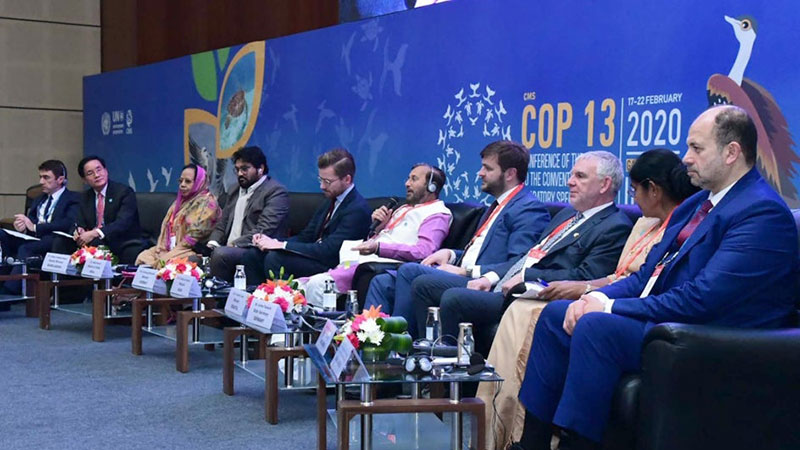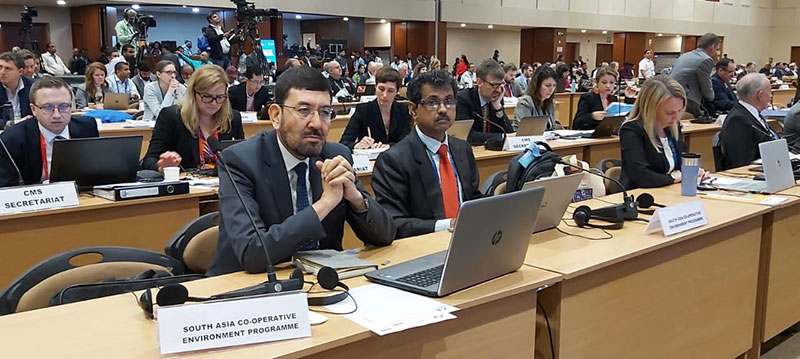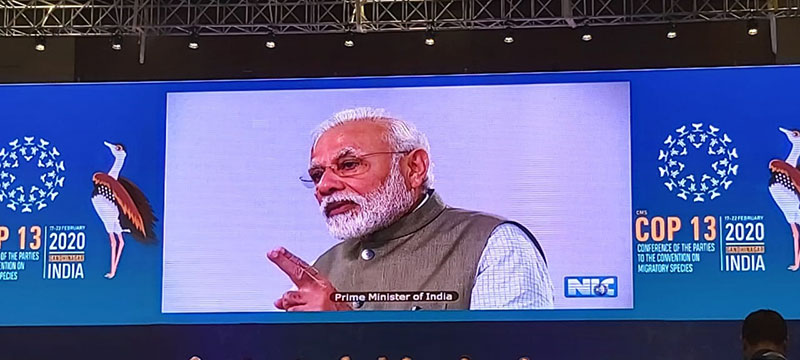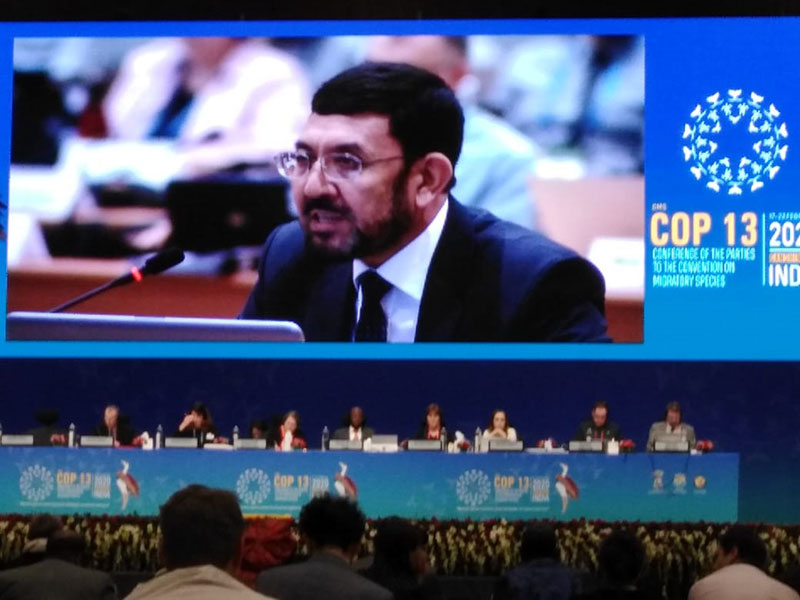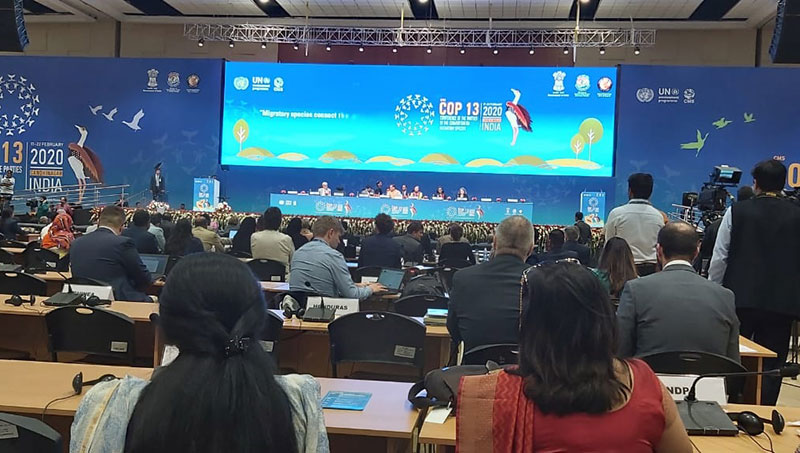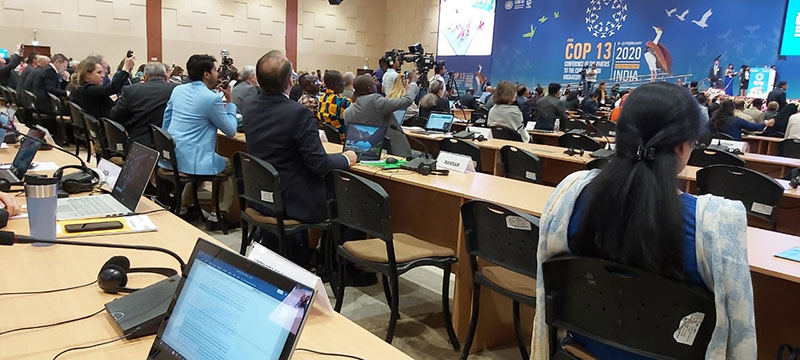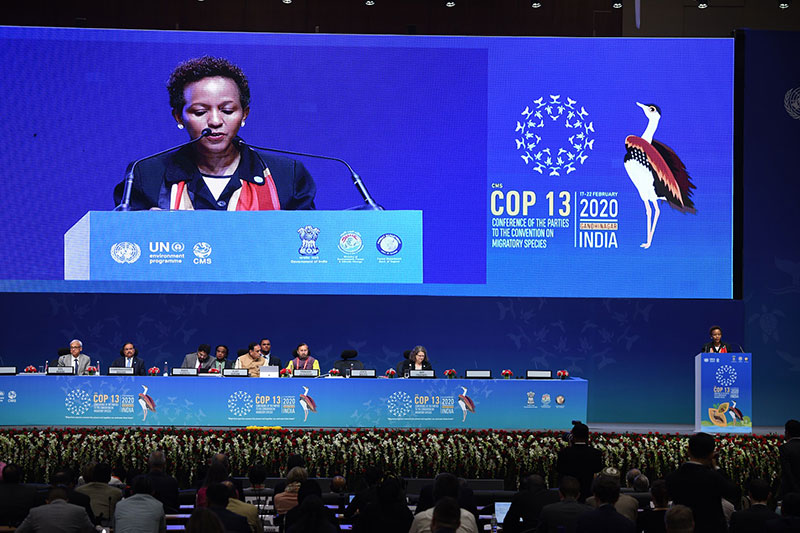February 18, 2020
The Thirteenth Meeting of the Conference of the Parties to the Convention on the Conservation of Migratory Species of Wild Animals (CMS COP13) has been held from 15 to 22 February 2020 at Gandhinagar, India. The meeting was officially inaugurated by the Prime Minister of India by addressing through video conferencing facility.
CMS COP13 is the first of a series of international nature-related meetings in 2020, which will culminate in the UN Biodiversity Conference at the end of this year, when a new global biodiversity strategy for the next decade will be adopted - the Post-2020 Global Biodiversity Framework.
Dr. Abas Basir, Director General of SACEP accompanied by Mr. W. K. Rathnadeera, Senior Programme Officer participated at this important CoP. In his statement at the first day of the meeting, Director General of SACEP stated among others, that adoption of Marine and Coastal Biodiversity Strategy for the South Asian Seas Region by the 6th Inter-ministerial meeting of South Asian Seas Programme of SACEP in Dhaka, Bangladesh on November last year, with the objective to provide a framework for cooperation and collaboration amongst the five maritime countries of South Asia and other stakeholders, for the application of ecosystem based approaches in managing coastal and marine resources, will ensure the conservation of biodiversity and safeguard ecosystem services for the well-being and poverty reduction of the people of South Asia. It also stated that SACEP in collaboration with the World Bank has initiated the implementation of a USD 40 million project for a five years period on Plastic Free Rivers and Seas for South Asia to catalyze actions that reduce the flow of plastic pollution into South Asian Seas. Dr. Basir highlighted the importance of enhanced regional collaboration in shared natural resources and anounced that SACEP is ready to work with CMS and other biodiversity conventions to enhance protection of biodiversity including migratory species.
